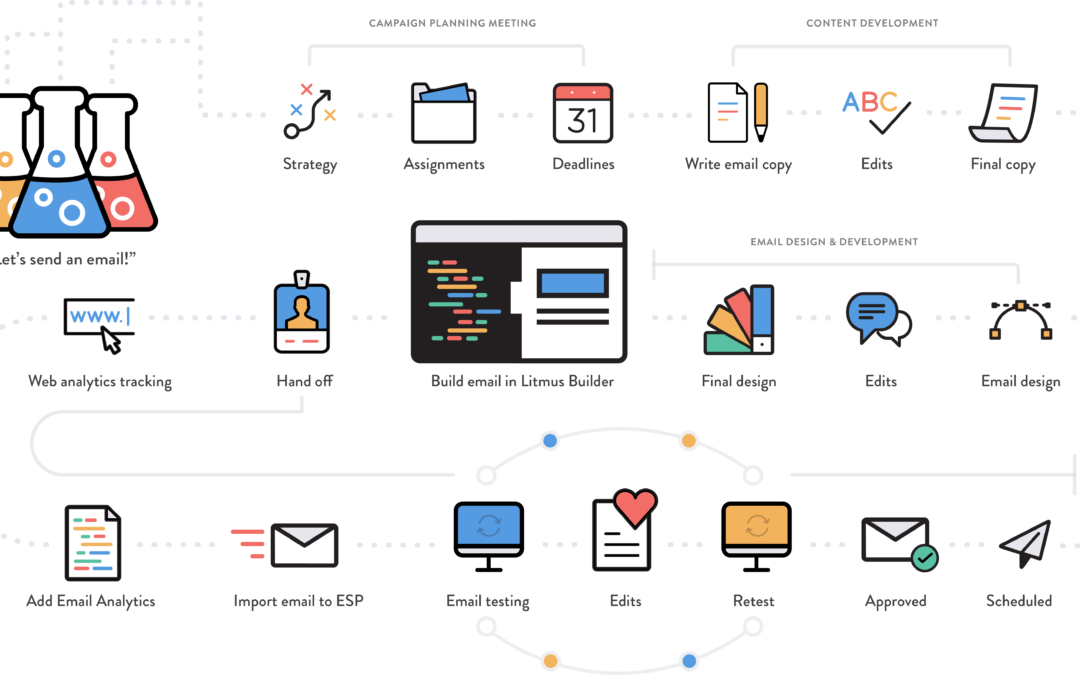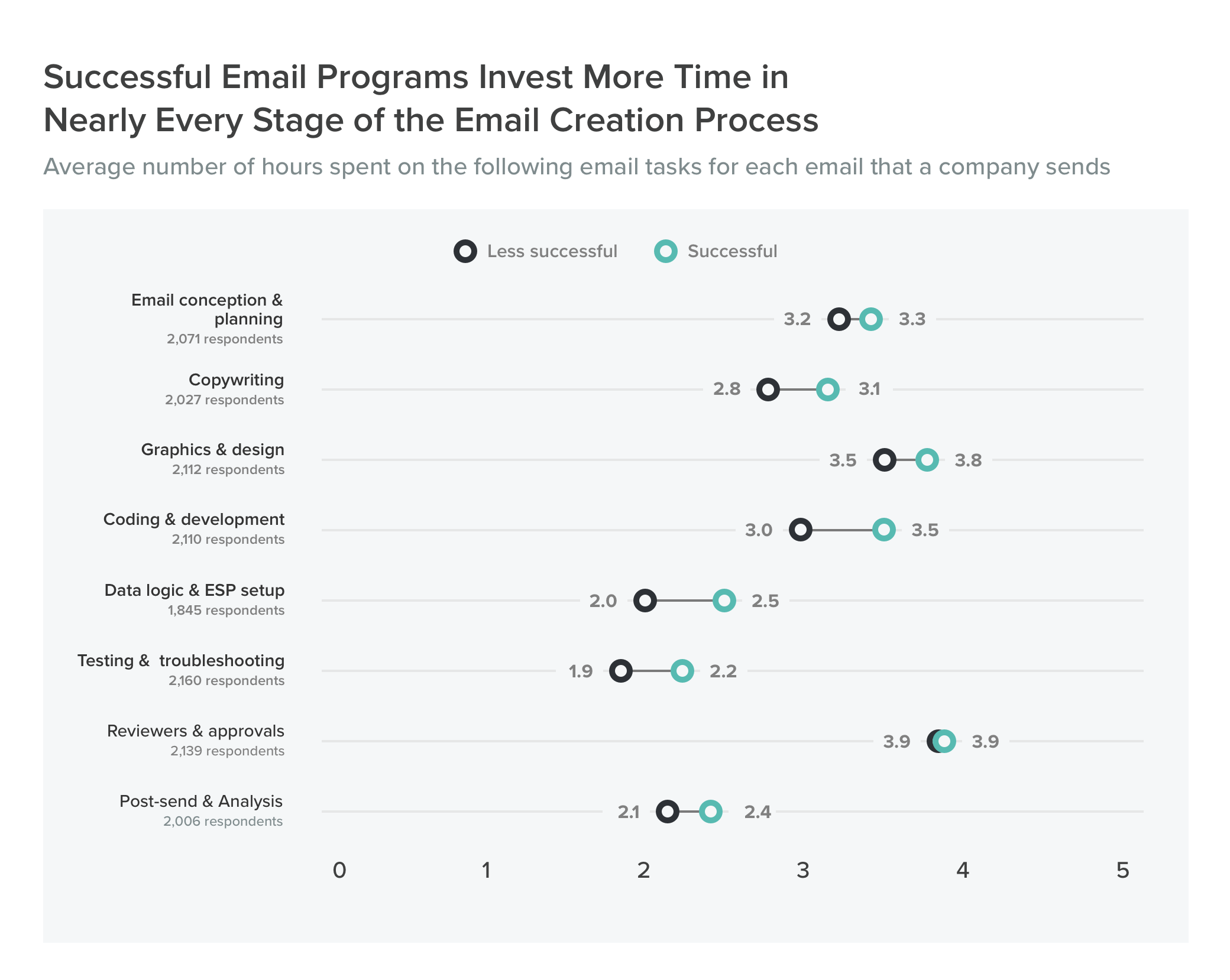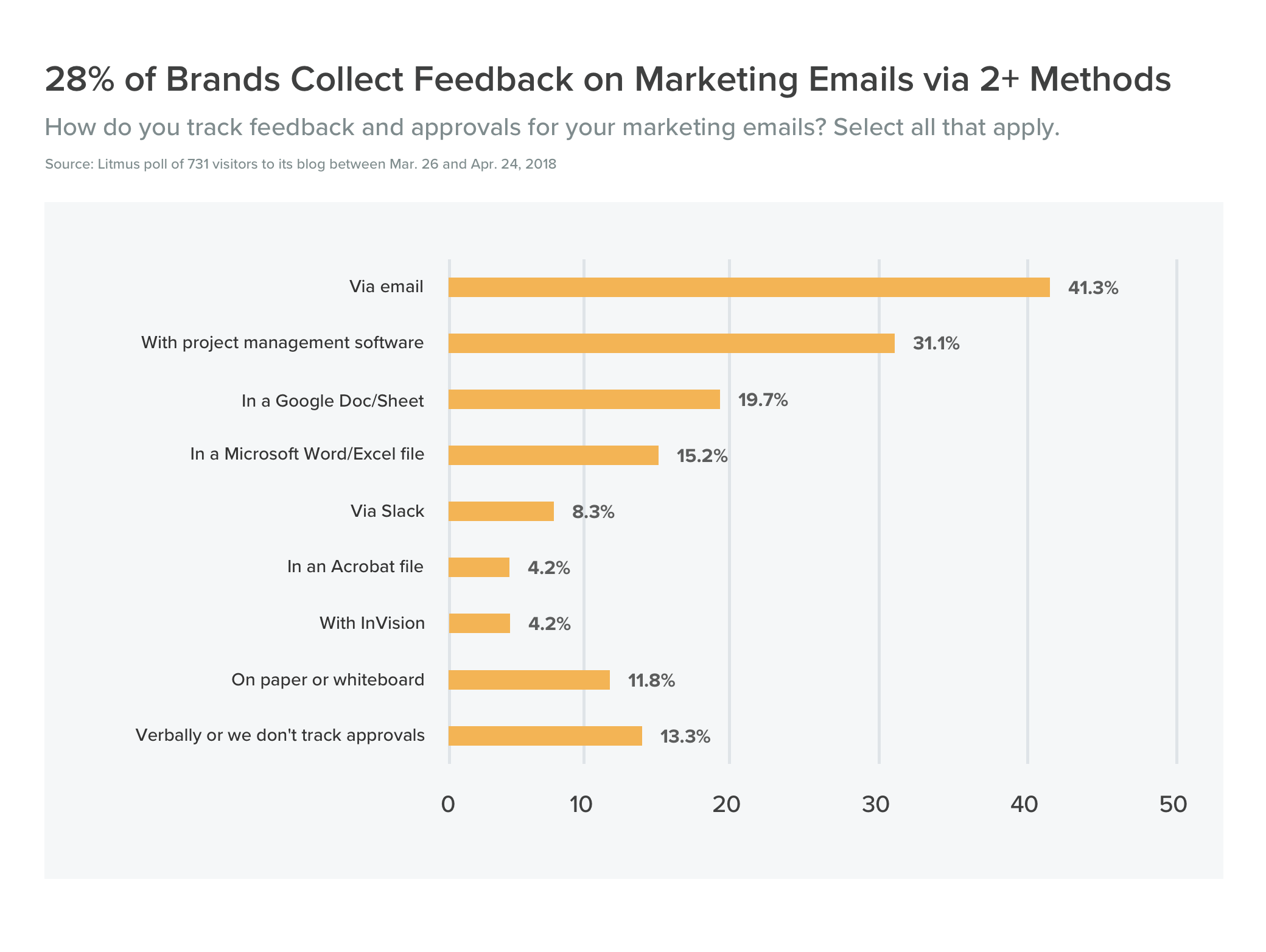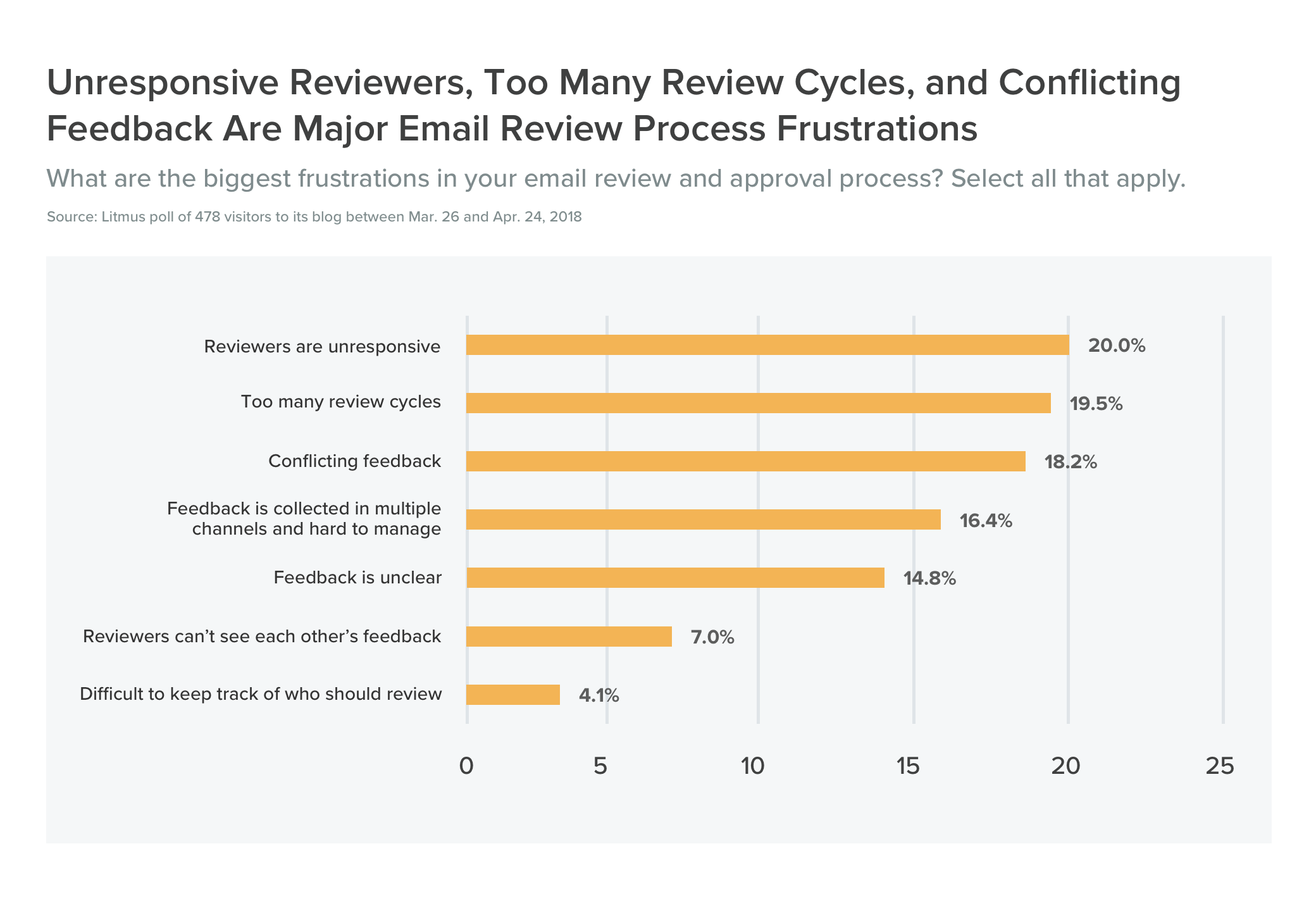It’s a staple of advertising messaging: Faster = Better. However, it’s not true when it comes to email creation processes.
Creating an email campaign is complicated, taking about two weeks on average from start to finish, according to Litmus’ 2018 State of Email Workflows report. Brands with 500 or more employees take even longer, dedicating 54% more time on average than smaller companies on each of their emails.
Hours—sometimes many hours—are spent on each of the eight stages that are part of the typical email creation process:
- Email conception & planning
- Copywriting
- Graphics & design
- Coding & development
- Data logic and setting up in email service provider
- Testing & troubleshooting
- Reviews & approvals
- Post-send analytics & analysis
Looking at each of those stages with more granularity, they look something like this:
Are there ways to save time on each of these stages? Absolutely…but they tend to involve either shortcuts that undermine the quality of the subscriber’s email experience or shortchanges that reduce the compellingness of the email’s value.
For instance, you can save time on graphics and design by not using images in your emails. You can save time on coding and development by avoiding personalization—and interactive emails are out of the question. You can save time on data logic by not segmenting any of your emails. You can save time on troubleshooting by not testing your emails, since you can’t fix problems you can’t see. And you can save time on analysis by limiting yourself to the pre-made reports in your ESP instead of building the bigger picture on email performance.
That’s not to say that there aren’t opportunities to be more efficient, there are. However, the time that’s saved often appears to be invested right back into the email program, which is wise considering email marketing’s hefty return on investment. This is clearly what happens at the more successful email marketing programs.
Marketers who describe their email programs as successful spend more time on every facet of email production compared to those at less successful programs. The only exception is reviews and approvals, which both groups spend the same amount of time on.
The Exception to the Rule
Let’s explore that one exception—email reviews and approvals—because it strikes us that this stage is different from others. How so? Well, it seems exceptionally inefficient.
For example, email programs spend 3.9 hours hours reviewing and approving each email they create. That’s more than they spend on any other stage of email creation, narrowly beating out time spent on graphics and design. That’s red flag No. 1 that this stage is in need of streamlining.
However, the problem gets significantly more worrisome when you look at larger brands. Companies with more than 500 employees generally spend an average of 59% more time on each stage of email creation compared to smaller companies. But they spend 99% more time on email reviews and approvals. And the larger the company, the worse it gets. That’s red flag No. 2.
 |
Make Your Email Review Process Less PainfulStreamline the time-consuming process of reviewing and approving emails with Litmus Proof. With a centralized tool for giving feedback, you can improve collaboration and enjoy fewer review cycles & faster approvals. |
To better understand the issue, Litmus did some additional research into how brands track feedback on draft emails and their frustrations with their review and approval processes. We found that many marketers have poor systems for collecting feedback.
For example, while most use a trackable medium for collecting feedback, such as email or a Google doc, 12% use paper or a whiteboard for feedback collection and 13% collect it verbally. Neither of those is useful if there’s a problem later and you need to figure out what happened.
Also, more than a quarter of brands use multiple methods to collect feedback. That’s likely a symptom of a lack of standardized tools and processes across departments, since marketing departments work with 2.4 other departments on average to get emails reviewed and approved, according to Litmus’ 2018 State of Email Workflows.
Collecting feedback on emails via more than one channel causes visibility problems that can lead to conflicting feedback. Indeed, those were among the things that frustrated marketers most about their email review processes.
Other frustrations centered around unresponsive reviewers and unclear feedback, which—together with the other issues—lead to having too many review cycles. Without a doubt, many of these frustrations are intertwined.
We’d Like to Help
Company leadership and email marketers don’t always see eye to eye, and that creates unnecessary tension and under-performance. Litmus has identified a number of key email marketing topics and assembled executive summaries that marketers can share with management, including one on How to Improve Email Review Cycles and Email Approvals.
Download the free Executive Summary →
Download that and other executive summaries from Litmus’ Email Marketing Leadership Series, including:
- Email Marketing Staffing & Resourcing for Success
- How to Overcome the Biggest Email Marketing Challenges of 2018
- Interactive Emails: Understanding the Hottest Trend in Email Marketing
The post Faster Isn’t Better, Except When It Comes to Email Review & Approval Processes appeared first on Litmus Software, Inc..
![]()





